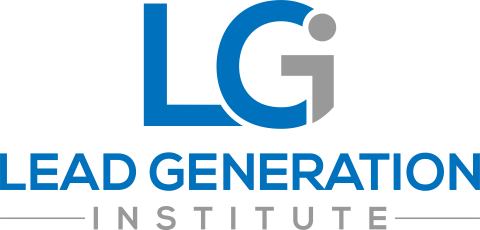In today’s highly digitized business environment, B2B marketing is highly reliant on data. However, customer information collected by traditional means is no longer sufficient to remain competitive. This is where intent data comes into play. By making use of a combination of customer signals and intent data, B2B companies get a competitive edge and are able to form a bird’s eye view of marketing trends.
Despite this, only about a quarter of all B2Bs say that they currently use intent data or an intent monitoring marketing stack. Yet, over a third have said that they plan to leverage customer insights in the near future. However, this apparent lack of widespread implementation is not surprising as the concept of search intent has only been around since around 2007. It wasn’t until 2015, when Google made several changes to its algorithm, that search intent became prominent.
Many B2B companies still feel that leveraging intent data is something out of their reach, while others that are using it fail to take full advantage of what this data can provide. Put simply, targeting the right audience with the right personalized content during the ideal time in their buyer journey is more effective than direct mail, email, or banner advertising, which rely solely on demographic and firmographic data. It is thanks to its efficacy that intent marketing can be a much-needed addition to your B2B marketing and sales initiatives.
Regardless of the rise in prominence of intent data, many marketers are still unaware of the benefits that it has to bring to the table. This is due, in large part, to the complexity that surrounds it. Below, we will be taking a look at why intent data is the future of B2B marketing.
What is Intent Data?
Before we can go into any meaningful details about what intent data provides to the B2B marketing world, we need to look at what intent data is. In short, this is information collected about a prospect or a company’s online activities. Capturing this customer information can be done internally (first-party intent data) or externally (third-party intent data).
First-party data is provided willingly by the customer by filling out forms and through your CRM or marketing automation platform (MAP). The main benefit of this data is that it indicates a potential buyer’s intent signal. Some examples include things like website visits, web pages accessed, content consumed, emails opened, and clicks.
The other type of intent data is generally collected by third-party data providers, such as publisher networks, and is sold to B2B companies. This information is used to better understand the online activities and external content consumption of prospects and target accounts, further adding to ABM benchmarks. Third-party intent data is usually used for building account lists, running targeted ads, and developing relevant content.
These insights, regardless of their source, allow you to track the customer’s intent regarding your products and/or services. In turn, this will help with your B2B lead generation, lead scoring initiatives, demand generation, and lead nurturing, while increasing the overall quality of the leads that make it through your sales funnel.
Time considerations and the possibility of incomplete data can sometimes lead to unintentional intent signal mistakes. After all, roughly 70% of CRM-generated data becomes obsolete annually. But when applied correctly and verified for accuracy, a user’s intent information can benefit your overall marketing and messaging efforts by improving relevancy. No matter how high-quality your content is, if your content isn’t relevant, it will not convert. Intent data can also help marketers discover and propose timely solutions for prospects’ needs and pain points.
The Future of B2B Marketing
With marketing teams always on the lookout for a competitive edge, anticipating their B2B buyers’ purchase intent can really help with marketing planning and increasing sales. Marketers can personalize their content marketing strategies, helping prospects to make more informed purchase decisions. In turn, this will lead to more potential customers finding out about your products and services.
The more data is being aggregated into your marketing automation platform and CRM system via AI-driven algorithms, the more precise your ideal customer profile and buyer personas will become. Future prospecting will forewarn of customers’ purchase decisions in the buyer’s journey and better equipping your team with what they need to personalize content for targeted audience segments.
Yet, even if 74% of marketing and sales teams say they want to be more data-driven, only about a third are able to put its analytics into action. [bctt tweet=”The sheer volume of information in circulation makes it hard to distinguish genuine intent signals from the ‘noise.'” username=”LeadGenInst”] To make matters worse, many marketers hoard all of this data in closed systems without ever using it.
Luckily, today’s artificial intelligence (AI) technologies are able to leverage customer insights and generate valuable information that gives a much clearer picture of customer behavior and intent. Below are several examples of how to best use customer insights.
The First Sign of Intent
Historically, large portions of the buyer’s journey were invisible to marketers. Not much was known about customer behavior outside of their activities on the company website. Keep in mind that over half of the buyer’s journey is completed before a prospect comes into contact with a sales rep for the first time. To get a competitive edge, marketers can now leverage AI-powered data to identify and guide B2B buyers towards their organization during the early stages of the buying cycle.
A Clear View of the Target Audience
For a long time much of B2B marketing was reactive to the customer’s direct requests. Successful marketers today need to become proactive and reach buyers in the early stages while also having access to plenty of customer information to build highly personalized marketing campaigns. Intent data helps you identify which accounts and prospects are in the market and in some cases, where they are in the buyer journey.
Automating Tasks
Even though intent data has been around for a while now, it was pretty hard for marketing professionals to act on it effectively. Marketing automation platforms and other AI-powered software can quickly turn huge volumes of customer insights into actions. Equally as important, many of these actions can be automated.
For instance, if a target account is searching for a particular keyword on the internet, you can automatically trigger a personalized ad campaign on that specific topic targeting that account. This will help you get your brand in front of that account and stay one step ahead of your competitors and ideally, taking control of the conversation early.
If you want to learn more about intent data for B2B marketing, subscribe to our newsletter and get the latest news delivered to your inbox.




